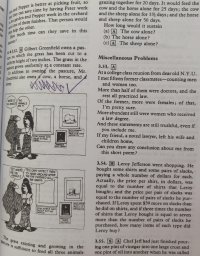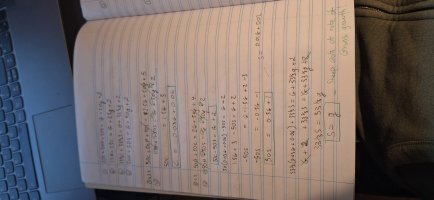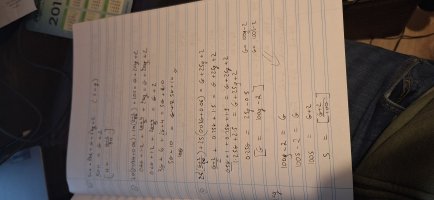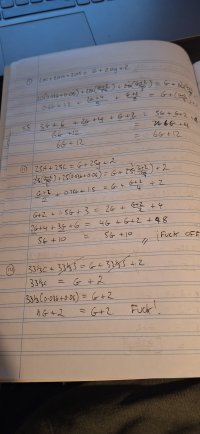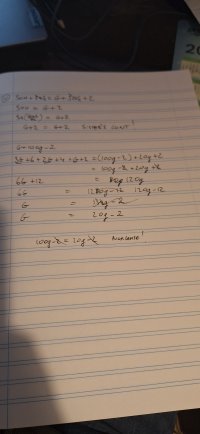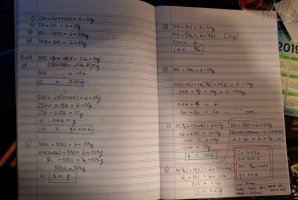Someone sent me this :
Now let C = total daily amount a cow eats
S = total daily amount a sheep eats
H = total daily amount a horse eats
X = total volume of food/grain in field.
So these equations make perfect sense to me.
20C + 20S + 20H = X
25H + 25C = X
33.3333C + 33.3333S = X
50H + 50S = X
But immediately I see I am wrong as I get 33.3333d for a cow to use up his supply and we know a cow + sheep will take 33.333 days to eat the whole field.
A horse, cow, and a sheep get enough feeding out of one field for 20 days
If the cow and horse get 25 days out of it, the cow and sheep 33 and a third days, the horse and sheep 50 days, how long will the cow alone get out of it
And the sheep alone
And the horse alone??
Now let C = total daily amount a cow eats
S = total daily amount a sheep eats
H = total daily amount a horse eats
X = total volume of food/grain in field.
So these equations make perfect sense to me.
20C + 20S + 20H = X
25H + 25C = X
33.3333C + 33.3333S = X
50H + 50S = X
But immediately I see I am wrong as I get 33.3333d for a cow to use up his supply and we know a cow + sheep will take 33.333 days to eat the whole field.

